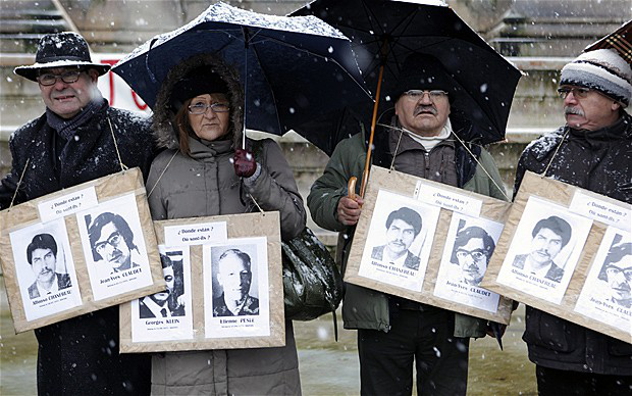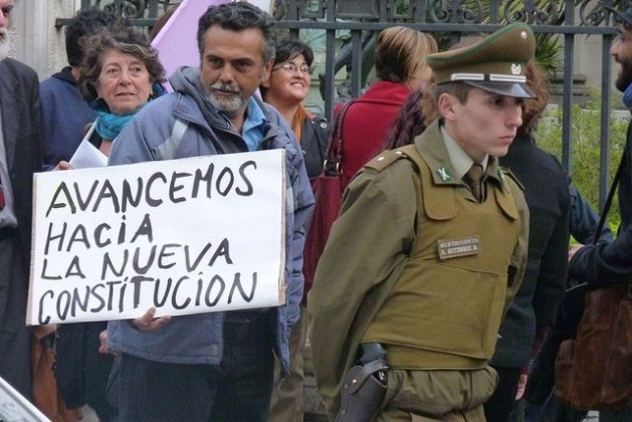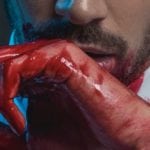 Weird Stuff
Weird Stuff  Weird Stuff
Weird Stuff  Our World
Our World 10 Ways Your Christmas Tree Is More Lit Than You Think
 Movies and TV
Movies and TV The 10 Coolest Stars to Set Sail on The Love Boat
 History
History 10 Things You Didn’t Know About the American National Anthem
 Technology
Technology Top 10 Everyday Tech Buzzwords That Hide a Darker Past
 Humans
Humans 10 Everyday Human Behaviors That Are Actually Survival Instincts
 Animals
Animals 10 Animals That Humiliated and Harmed Historical Leaders
 History
History 10 Most Influential Protests in Modern History
 Creepy
Creepy 10 More Representations of Death from Myth, Legend, and Folktale
 Technology
Technology 10 Scientific Breakthroughs of 2025 That’ll Change Everything
 Weird Stuff
Weird Stuff Ten Bizarre Facts About The Doge Meme
 Our World
Our World 10 Ways Your Christmas Tree Is More Lit Than You Think
 Movies and TV
Movies and TV The 10 Coolest Stars to Set Sail on The Love Boat
Who's Behind Listverse?

Jamie Frater
Head Editor
Jamie founded Listverse due to an insatiable desire to share fascinating, obscure, and bizarre facts. He has been a guest speaker on numerous national radio and television stations and is a five time published author.
More About Us History
History 10 Things You Didn’t Know About the American National Anthem
 Technology
Technology Top 10 Everyday Tech Buzzwords That Hide a Darker Past
 Humans
Humans 10 Everyday Human Behaviors That Are Actually Survival Instincts
 Animals
Animals 10 Animals That Humiliated and Harmed Historical Leaders
 History
History 10 Most Influential Protests in Modern History
 Creepy
Creepy 10 More Representations of Death from Myth, Legend, and Folktale
 Technology
Technology 10 Scientific Breakthroughs of 2025 That’ll Change Everything
10 Disturbing Facts About Latin America’s Cruelest Dictator
By their nature, dictators are cruel and evil. But even in the pantheon of modern despots, you occasionally stumble across one so cheerfully sadistic he makes the others look like Barney the Dinosaur.
Meet Augusto Pinochet: former leader of Chile and all-round psychopath. Between the years 1973 and 1990, his regime ruled with an iron fist, murdering thousands of ordinary people and torturing tens of thousands more. But statistics can’t convey the true horror: Over 17 years his goons were responsible for some of the strangest, cruelest and most audacious atrocities the world has ever known.
10 He Had His Closest Friends Murdered

In June 1973, Augusto Pinochet was a shy, middle-aged army man with close ties to the government. Then-president Salvador Allende considered him a loyal ally; he and his wife were intimate friends and dining guests of the defense minister Jose Toha and the head of the Chilean armed forces, Carlos Prats, treated him like a son. The world at large saw him as polite, kind-hearted and touchingly loyal to those he loved.
Fast forward three months to September 1973 and Pinochet was head of a junta that had just overthrown the government in a bloodthirsty coup. On his orders, fighter jets had bombed the residence of his ally Allende—who died worrying about Pinochet’s safety. The defense minister Jose Toha had been imprisoned and would later be tortured to death, while his former father-figure Prats had already been earmarked for assassination. In less than 90 days, Pinochet had gone from being their close friend, one who cried during soppy movies, to the man responsible for their brutal, protracted deaths. It was a shocking betrayal for everyone involved, but the Chilean despot was only warming up.
9 He Turned Chile’s Capital Into A Giant Torture Camp

In the immediate aftermath of the coup, the Chilean capital became a modern vision of hell. Armed troops went from door to door looking for evidence of left-wing sympathy. Students, writers, Catholics, indigenous people and union workers were all rounded up and sent to the torture centers sprouting up across Santiago like mushrooms. Sometimes these were in the back rooms of military barracks or police cells, but more often they were in ordinary houses, hotels or offices. At the height of the repression, over 60 round-the-clock torture centers were operating in the metropolitan area of the city alone—the most infamous of which was the international soccer stadium.
For months after the coup, the stadium was ground zero for some of the worst human rights abuses in living memory. Ordinary people were rounded up and separated into two lines: those who would and those who would not die. Those in the “death line” were taken onto the pitch and shot by firing squads; those who lived frequently underwent weeks of torture before release. For six whole months the capital essentially became a gigantic concentration camp, a festering sore on South America’s backbone.
8 His Secret Police Excelled At Cruelty

Lelia Pérez had her first run-in with Pinochet’s secret police (the DINA) at the age of 16. In an interview with Amnesty International, she later described how she was used as a training tool for DINA recruits hoping to learn torture skills. For days at a time she’d be strapped to a metal bed and given electric shocks until she passed out, only for the process to start again the next day. Believe it or not, she was one of the lucky ones.
Other inmates were forced to live through abuse most of us can’t even imagine. According to the BBC, victims had their bones broken with hammers, were forced to play Russian roulette, and had their legs crushed under the wheels of cars. Others had their skin melted with flamethrowers, were pushed out of helicopters, or forced to eat the flesh of murdered fellow prisoners.
At their worst, DINA torturers were masters of humiliation. People had their heads forced into buckets of excrement. Women were raped by men with venereal diseases. One unit became notorious for forcing their victims to have sex with dogs. In short, just about every perversity imaginable played out in the dark streets of Pinochet’s Santiago, and even death couldn’t guarantee your escape.
7 He Destroyed His Victim’s Corpses

At the time of writing, over 1,000 of the regime’s victims are still officially missing in Chile, their families unsure whether they’re alive or dead. They will almost certainly never be found. For Pinochet and his DINA, simply killing someone wasn’t enough: They wanted to obliterate their existence entirely.
For some units, this meant tying their victims to pieces of railroad track and loading them into a helicopter. Then they would fly out over the empty wastes of the Pacific Ocean and throw them into the freezing water below. For others, such as the units stationed at the notorious death camps in Chile’s Atacama Desert, it meant grinding the bodies of their victims down until their bones were little more than dust and scattering the remains to the wind. Yet others used dynamite to blow the corpses to pieces. A few are thought to have been dumped from planes high up in the Andes, where no humans ever go.
Why did they do this? The simple explanation is that they wanted to dispose of the evidence. But there is another, grimmer one: Pinochet hated his victims so much, he never wanted their relatives to receive closure. If that was his plan, then he surely succeeded.
6 The Caravan Of Death

Even in the very worst dictatorships, it’s still possible to find pockets of clemency—microcosms where the guard will look the other way or the local police man casually neglect to turn you in. Chile under Pinochet was no different. Away from the cities, the puppet commanders and mayors he installed in every town were frequently just ordinary people who’d rather their Catholic and working class neighbors weren’t taken away to be tortured. Unfortunately, Pinochet put measures in place to stop them showing any mercy.
Known as the “Caravan of Death,” these measures consisted of a small elite army unit that went from town to town, casually exterminating any leftists who’d avoided the camps. Armed with grenades, knives and machine guns, they’d enter a province, round up any opponents of Pinochet who’d survived the initial coup and then murder them. They were active for 22 days only, and in that time managed to kill nearly 100 people up and down the 4,000 kilometer (2,485 mi) spine of Chile—a terrifyingly efficient operation.
5 His Forces Carried Out A Terror Attack In Washington DC

In 1976, Orlando Letelier was a rising star on the DC political scene. A former minister in the deposed Allende government, he’d spent a year imprisoned in a concentration camp before going into exile. Now working for a think tank in Washington, he was considered the most brilliant, outspoken critic of Pinochet on Earth. Since you’ve read this far, you can probably guess where this is going.
One September morning, a DINA bomb demolished his car as he drove through the center of DC. In the car with him was Ronni Moffitt (pictured), a 25-year-old US citizen. The explosion threw the car through the air, tore Letelier’s body to shreds and sent a piece of twisted metal deep into Moffitt’s throat. The two died within the hour. The scene of the attack was so bloody that eyewitnesses reported secret service guys—people trained to deal with violent and unpleasant situations—throwing up at the sight of it.
It was the first time in over a century that a foreign government had successfully attacked the city. Care to guess how the international community responded?
4 …And The World Did Nothing

For a man who carried out a lethal terrorist attack against the United States, Pinochet sure was a popular guy. Jimmy Carter met him. Gerald Ford and Henry Kissinger went out of their way to court and cover up for him. Reagan’s administration flatly refused to condemn his regime’s human rights abuses. But even this has nothing on the fawning of British Prime Minister Margaret Thatcher.
Right up until the dictator’s death, the Thatcher openly defended Pinochet and his blood-soaked rule. When human rights abuses were brought up, she told people to look at Chile’s economic achievements. When sickening allegations of torture and death squads came to light, she dismissed it as Communist propaganda. She opened British arms sales to Chile again following the coup, visited Pinochet when he was under house arrest in 1999, and used her first party speech in nine years to beg for his release. Not too long before, the DINA had abducted, tortured and raped a British citizen.
Yet she wasn’t the only one blinded by the dictator’s charms. The Vatican refused to speak out against the massacres occurring in Chile, even though they often targeted Catholics. For a long time, it seemed this brutal madman could do no wrong.
3 He Inspired Dictators Across The Continent

Have you ever wondered how a despotic autocrat celebrates their birthday? Well, on November 25, 1975, Pinochet had likely one of the strangest parties in history when he invited the butchers in charge of Argentina, Paraguay, Brazil, Bolivia, and Uruguay to visit Santiago. There, he ushered in his 60th year by unveiling the sadistic Operation Condor.
Although it sounds like an action movie, Condor was in reality one of the nastiest terror networks ever devised. Overseen by the DINA, it was essentially a pact between the six countries to hunt down dissidents wherever they were, and murder them. Operation Condor had the full support of the US government. It was Condor that allowed Pinochet to launch a terror attack on Washington, and Condor that allowed him to kill opponents as far away as Rome. But it was also the DINA’s expertise that allowed the lesser dictatorships on the continent to murder a phenomenal number of opponents at home.
It’s estimated now that 80,000 leftists, students, human rights advocates and intellectuals were “disappeared” during Condor. Many of them were allegedly thrown out of helicopters into the Atlantic, a trick perfected two years earlier by the DINA. All told, Pinochet’s birthday present to himself ruined the lives of hundreds of thousands of people across three continents and ushered in one of the worst eras of repression in recent history.
2 He Still Controls Chile’s Political System

Augusto Pinochet stepped down as leader of Chile in 1990, paving the way for the country’s first democratic elections. At least, they were democratic if you define “democracy” as “its exact opposite.” Between 1990 and 1998, Pinochet retained his position as head of the armed forces, frequently threatening to reinstall himself as dictator if the government didn’t do exactly as he wished. When he was finally forced from the army, he became “Senator for Life”—a position that included power of veto over any proposed legislation. Finally, in 2006, he did the decent thing and died, ending his stranglehold grasp on Chilean politics at last.
Or rather not, as the case may be. Unbelievably, Pinochet’s wishes continue to dictate government policy in Chile, nearly eight years after his death, thanks to his role in writing the country’s constitution. Although crafted during the most repressive years of the dictatorship, it has remained unchanged ever since, and its tricky wording makes it almost impossible for future governments to undo any of Pinochet’s “reforms.” This means that unless the president can whip up total cross-party support for writing a new one (something that’s pretty unlikely), Chile will forever exist in the image of a man responsible for hundreds of thousands of deaths.
1 He’s Still Revered Today

When all the excessive cruelty, all the needless deaths, terror attacks and state-sanctioned rape is added up, it seems impossible to believe even a mother could still love Pinochet. Yet this tyrant—the man responsible for multiple instances of torture, cannibalism, and sexual abuse, a man who once ordered that a pregnant woman be thrown from an airplane—remains unfathomably popular both at home and abroad. In Chile, the general’s body was viewed by 60,000 weeping mourners.
Today, politicians still feel comfortable telling the public he “saved” their nation. In Australia, a politician recently appeared on national TV calling him a “reluctant hero.” The Wall Street Journal frequently runs editorials praising the man who killed American citizens, and worldwide a disturbing trend seems to be growing towards claiming him as a sort of saint.
Now, it’s true that Pinochet replaced a president who was on track to divide the country irreparably. It’s also true that his free-market reforms made Chile rich. But stacked up against the crimes on this list, neither of those things should count for squat. General Augusto Pinochet may have “saved” his nation economically, but in doing so he did his level best to sacrifice its soul.







![11 Lesser-Known Facts About Mass Murderer Jim Jones [Disturbing Content] 11 Lesser-Known Facts About Mass Murderer Jim Jones [Disturbing Content]](https://listverse.com/wp-content/uploads/2020/09/jonestown2-copy-150x150.jpg)
